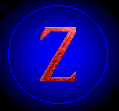INTRODUCTION
The Legend of Zelda series has been around since the late 1980s, with the first title for the Nintendo Entertainment System. It was created by Shigeru Miyamoto and his genius development team at Nintendo of America. Shigeru Miyamoto is famous for creating some of Nintendo's most-recognized characters, such as Link, Mario, Donkey Kong, and others. The first Zelda title involved a young boy with a sword and shield equipped, ready for battle. He also possessed wisdom and courage to the greatest extent. His name was Link, and he debuted with Zelda 1 in 1987. Along with Link, there was the evil Ganon. This pig-like creature was always after the sacred Triforce, the symbol of the land that possessed the powers of the founding goddesses. The land was called Hyrule, and the Princess of Hyrule was Zelda. Princess Zelda, whom the game was named after, always got herself into trouble because of the sacred Triforce.
It was up to Link to rescue the Triforce so it would not get into the pig-like hands of Ganon. Link used swords, bombs, and other weapons to fight through the dungeons which kept pieces of the Triforce in them. Once all the dungeons were complete, Link battled against Ganon in an attempt to save Hyrule completely. This concept was obviously different than most other games at that time. This was not one of those never-ending games that involve high scores. You know, those games where there is no end, you just play until you lose. There is no end, there is no limit to the score you can get. You just play and play, and see how far you can get.
This was not a side-scrolling game. By that I mean, this was not a game where you just move the controller right for the whole game. There is nowhere else to go except right. You can't go in the other direction, just keep heading right and get past anything that's in your way. If you make it to the end, you win. Zelda was different because you could go any way you wanted to. Left, right, forward, backward, up, down, anyway, and there's always something either way.
This was not a simple 1-D Atari game. No, no, it was much more than that.
It was a new concept that caught on greatly. The Legend of Zelda, the original, is considered to this day as one of the greatest NES titles of all time.
You know the drill. If there's a game, and fans love it, they'll ask for another one. A sequel. A Zelda II. Nintendo answered back, and in 1988 they delivered the sequel, "The Legend of Zelda II: The Adventure of Link". This game featured all new characters, and all new concepts. But some fans were sadly disappointed.
It wasn't that it was a bad game, but not as good, some fans say. Some Zelda fans say that they hated the side-scrolling feature that appeared sometimes. Some Zelda fans say that it was just too hard. Many agree that the game was fair but just wasn't Zelda-like.
Several years later, Nintendo answered back again with another game, for the new Super Nintendo Entertainment System, the third of the series, "The Legend of Zelda: A Link to the Past". This game is still considered as quite possibly the greatest game of the Zelda series so far. In this game, Link was upgraded from the simple NES to the more complex SNES. There was a sense of freedom as gamers searched around the new version of Hyrule. Zelda: LttP was a best-seller, and is still played today.
Link then moved to the Game Boy, several years later, on his journey to a strange island outside of Hyrule. With the owl, Kaepora Gaebora, to lead him, Link set out on a quest to awaken the Wind Fish and return to his home land.
In 1998, perhaps one of the greatest games for the Nintendo 64 was released. From the same person who, 11 years earlier, created the original Zelda, came the fifth of the series. Zelda: Ocarina of Time. Shigeru Miyamoto and team worked for five years in an effort to transport Link from a group of small pixels into a complex 3-D character in a vast 3-D world. Link set out on a quest from his home in Kokiri Forest to obtain three Spiritual Stones and six legendary Medallions. Not as easy as it sounds, though, because Link had to travel across the whole world, fighting off villains, obtaining necessary weapons, and meeting new people to carry out his quest. At the end, Link faced off in a battle against Ganondorf Dragmire and his final form, Ganon, to save Hyrule...for a time.
However, Link was not able to obtain the full Triforce, this time.
Tired from his Ocarina of Time adventures, Link rode his horse on a solitary path in the Lost Woods. Little did he know that this path actually led to a parallel world.
In 2001, Zelda: Majora's Mask was released. In this game, Link became trapped in a parallel world to Hyrule, called Termina. In this land, Link's quest was like no other: To obtain all masks and to stop the moon above from falling onto the world. Never before did Link have a time limit to deal with, but now he did. In his sixth adventure, Link had three days to save the world. However, like always, he was successful.
The world is finishing up Majora's Mask now. Many wonder what the next quest will be. What is in store for Link this time? Will he save the Triforce again? Another trip to a strange island? Another voyage into a parallel world?
What awaits Link over the horizon?
